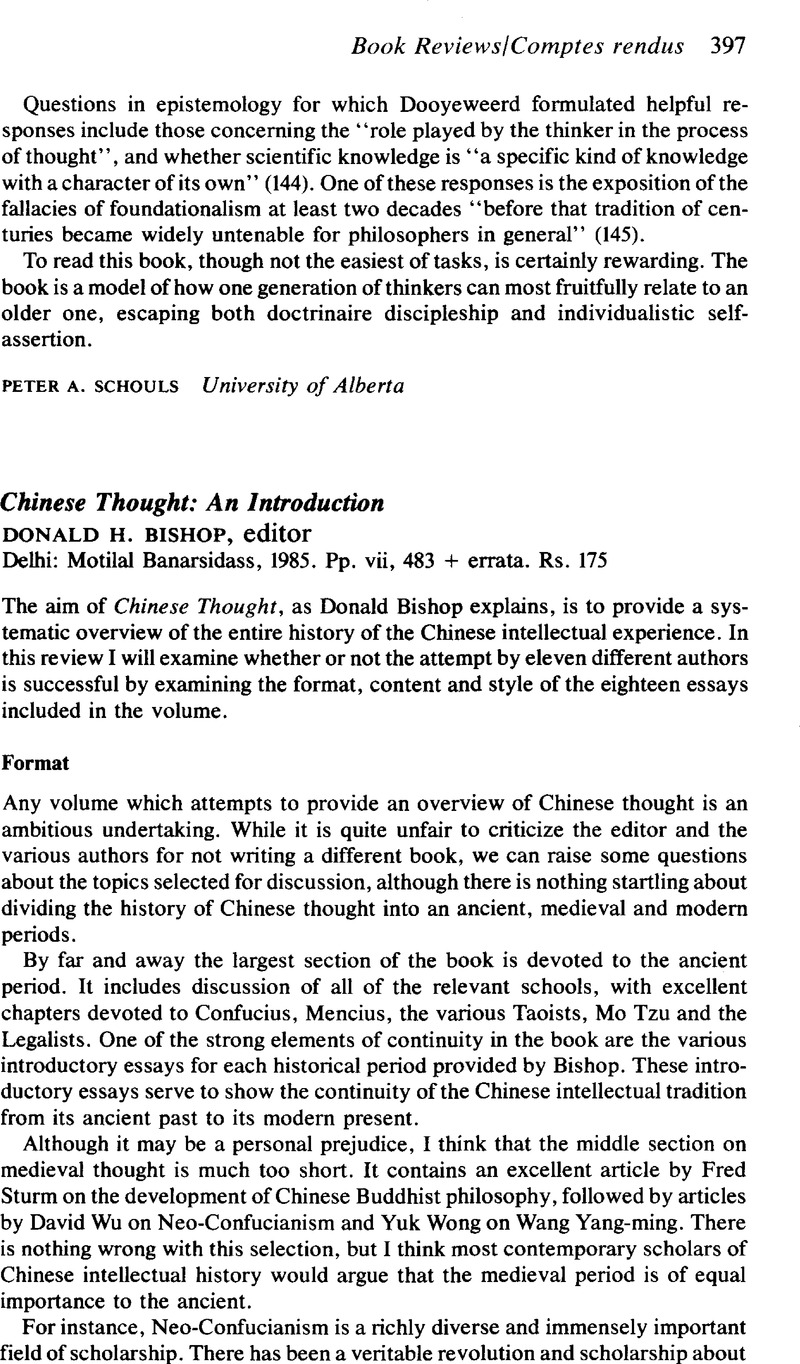No CrossRef data available.
Article contents
Chinese Thought: An IntroductionDonald H. Bishop, editor Delhi: Motilal Banarsidass, 1985. Pp. vii, 483 + errata. Rs. 175
Published online by Cambridge University Press: 13 April 2010
Abstract

- Type
- Book Reviews/Comptes rendus
- Information
- Dialogue: Canadian Philosophical Review / Revue canadienne de philosophie , Volume 26 , Issue 2 , Summer 1987 , pp. 397 - 399
- Copyright
- Copyright © Canadian Philosophical Association 1987
References
1 The work which will no doubt become the new standard is Schwartz, Benjamin I., The World of Thought in Ancient China (Cambridge: The Belknap Press of Harvard University Press, 1985)Google Scholar.
2 For instance, see Fingarette, Herbert, Confucius—the Secular as Sacred (New York: Harper & Row, 1972),Google Scholar and Wei-ming, Tu, Centrality and Commonality: An Essay on Chung-yung (Honolulu, HI: The University Press of Hawaii, 1976)Google Scholar; Wei-ming, Tu, Humanity and Self-Cultivation: Essays in Confucian Thought (Berkeley, CA: Asian Humanities Press, 1979)Google Scholar.
3 Two seminal works, which have more than adequate bibliographies, are Bary, Wm. Theodore de, Neo-Confucian Orthodoxy and the Learning of the Mind-and-Heart (New York: Columbia University Press, 1981)Google Scholar and Benjamin Elman, A., From Philosophy to Philology: Intellectual and Social Aspects of Change in Late Imperial China (Cambridge: Harvard University Press, 1984)CrossRefGoogle Scholar.
4 For an analysis of some of the differences see Overmyer, Daniel L., Religions of China: The World as a Living System (San Francisco, CA: Harper & Row, 1986)Google Scholar and Metzger, Thomas A., Escape from Predicament: Neo-Confucianism and China's Evolving Political Culture (New York: Columbia University Press, 1977)Google Scholar.
5 For a brilliant defence of this dual method see Wei-ming, Tu, Confucian Thought: Selfhood as Creative Transformation (Albany, NY: State University of New York Press, 1985). And for a fascinating defence of the philosophic tradition, seeGoogle ScholarCua, A. S., Ethical Argumentation: A Study in Hsiin Tzu's Moral Epistemology (Honolulu, HI: University of Hawaii Press, 1985)Google Scholar.


